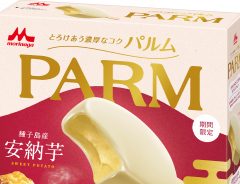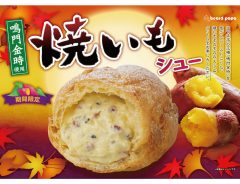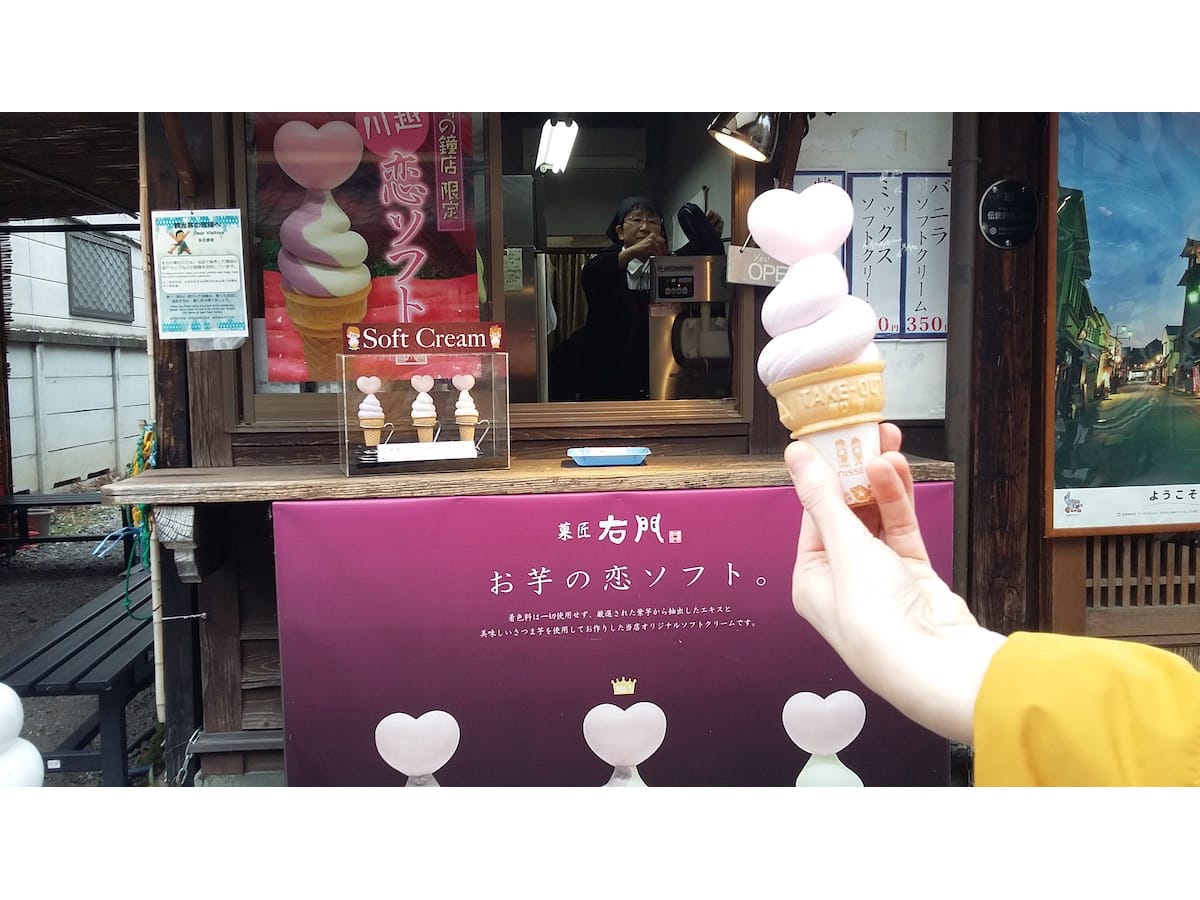- Tags:
- baked potato / Kawagoe / Sweet Potato / yaki-imo
Related Article
-

Starbucks Japan’s syrupy “Daigaku Imo Frappuccino” uses a whole candied sweet potato
-

Japanese restaurant’s Chicago pizzas will stun you this Halloween
-

Japanese sweet potato-flavored ice cream bars offer a rich and creamy preview of fall
-

Japan’s Beard Papa’s releases stuffed roasted sweet potato cream puffs for a fall flavor
-

Japan’s New No-Bake Butter Cake Is As Buttery As It Gets
-

Visit an Edo Period Style Starbucks in Japan This Spring



Roasted sweet potatoes are a popular street food all over East Asia. In Japan, they’re called yaki-imo (焼き芋). Yaki-imo vendors first appeared on the streets of Japan more than 100 years ago. Yaki-imo vendors would travel the city hawking their fares from large cast-iron ovens mounted on handcarts and their plaintive cries became synonymous with the winter months. When the age of automobiles arrived, the vendors mounted their ovens on the back of mini-trucks. These days, the handcarts are a thing of the past and even the mini-trucks have become rarities.
Customers outside a shop selling yaki-imo. | Photo by George Lloyd
You’re more likely to find yaki-imo being sold from dedicated shops. They do a roaring trade, nowhere more so than in Kawagoe in Saitama prefecture, which has long been famous for its yaki-imo shops. Being just a tad over an hour by train from Tokyo’s Ikebukuro station, the town makes an ideal day trip from Tokyo.
Kawagoe’s main drag is a veritable mecca for anyone with a sweet tooth. You’ll find shops selling sweet potato chips, sweet potato ice cream, sweet potato coffee, and even sweet potato beer, which is brewed at the local Coedo Brewery.
Chocolate flavoured yaki-imo cakes | Photo by George Lloyd
Take a bite of a freshly baked sweet potato and you’ll understand why they’ve been so popular for so long. Sweet potatoes have a mild, creamy taste and a wonderful velvety texture. They’re sweet, of course, but have none of the sickly aftertaste that you tend to get from eating a sugary snack.
You can even find yaki-imo flavoured gyoza dumplings! | Photo by George Lloyd
Like many crops that were once little-known exotics, only a handful of species of potato have become well known outside their countries of origin, leaving literally hundreds undiscovered and unappreciated. The same holds true for the sweet potato, which originated, like all potatoes, in the Andean mountains of South America.
In Japan, six species of sweet potato are popular. One of the best known of them is the Kintoki-imo (金時芋), or ‘golden time’ sweet potato. Kintoki-imo is the classic sweet potato. It has a hearty texture and luxuriant flavour that are sure to transport your tastebuds to a higher realm. Just one will keep you going for hours.
Yaki-imo flavoured cake in yellow boxes. | Photo by George Lloyd
Another perennial favourite is the anno-imo (安納芋). It is packed with carotene, which lends it a dramatic, rich orange colour. It has a melt in your mouth texture, on account of being moister than most varieties of sweet potato.
The most eye-catching member of the sweet potato family is probably the beni-imo (紅芋), which is the most common sweet potato in Okinawa. It’s often eaten in tarts and can be instantly recognised by its wonderfully deep purple colour, part of what makes it an antioxidant-rich superfood. Okinawans will tell you that one of the reasons they have the longest life expectancy in Japan is their diet of nutrient-rich foods like the beni-imo.
Photo by George Lloyd
Kawagoe has a lot more to offer than sweet potatoes. Once you’ve had your fill of yaki-imo, wander down Confectionery Row (菓子屋横丁, kashiya yokochō) and you’ll find a dozen sweet shops selling old-fashioned snacks like rice syrup, many priced at no more than 50 yen. The alley is popular with tourists, who come to enjoy the nostalgic atmosphere.
Sweets aside, Kawagoe is also known for its abundance of architecture from the Edo period (1603-1868). Kurazukuri Street (蔵造りの町並み, Kurazukuri no machinami) is lined with traditional warehouses constructed in a style called kurazukuri. The town’s merchants started building kurazukuri warehouses in the aftermath of a great fire that consumed much of the town’s shopping district in 1893.
Kurazukuri warehouses were designed to be fireproof, and since Kawagoe escaped the ravages of WW2 with only minor damage, they make the town a great place to savour the ambiance of pre-industrialised Japan. Visit the Kawagoe Kurazukuri Museum, located in one of these traditional warehouses, and you’ll get a fascinating insight into how merchants in the Edo era lived and worked.
The Bell of Time clock tower. | Photo by George Lloyd
It’s also worth keeping an eye out for the Bell of Time (時の鐘, Toki no kane), a bell tower originally built between 1624 and 1644. The present structure was built in 1894, just a year after the Great Fire of Kawagoe.
Kawagoe is just over an hour from Ikebukuro on the Fukutoshin Line. A one-way ticket will set you back 760 yen.